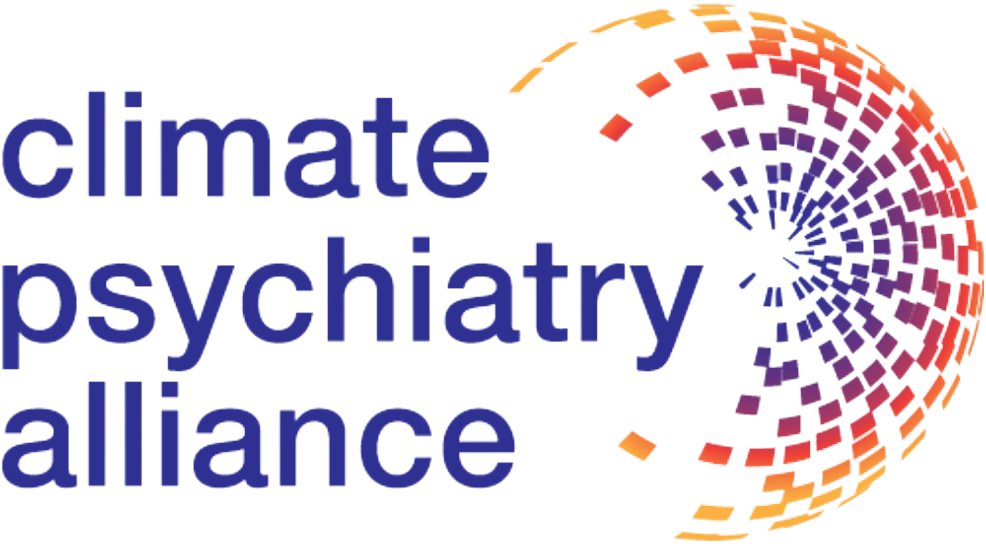Natural Disasters from
Climate Change
What Every Psychiatrist
Needs to Know in Response
– Anthony T. Ng, MD, DPAPA
Chairperson American Psychiatric Association Caucus on Mental Health and Climate Change
The correlations of climate change on the increased incidence and severity of natural disasters, such as floods, hurricanes, extreme snowstorms and subsequent adverse impact on the health and mental health of populations have been well documented. (1, 2, 3) Climate change can influence the timing, intensity and duration of these events. As such psychiatrists and other mental health professionals need to understand the important role they can play in helping their communities deal with the psychiatric aftermath of such extreme events.
Disasters can create a variety of symptoms in its aftermath. (4) Significant anxiety, distress, depression, anger are just some of these reactions. Often these reactions are intense but they may be transient. Variety of psychiatric disorders may be the result of such traumatic events. They include major depressive disorder, anxiety disorders, acute stress disorder, adjustments disorders, exacerbation of pre-existing Post Traumatic Stress Disorder. It is important that psychiatric support be provided early on to mitigate the psychiatric distress of affected individuals and communities. Psychological First Aid has been shown to be an effective tool to help address the mental health sequelae in the post disaster environment. (5)
Disaster mental health usually occurs in phases. (see Fig 1.) It starts with the pre-disaster phase. This is the point when communities are preparing for a disaster. For individuals, feelings of anxiety and the fear of the unknown and sense of vulnerability may be distressful. In natural disasters, there may be some advanced warning from governmental agencies. This is followed by the impact phase when the disaster strikes. At this point, community is focused on basic survival and safety. There are strong emotions, often normal responses to extraordinary events. The heroic phase follows. This is where the intense rescue efforts occur, lasting days to weeks. Intrusive symptoms and hyperarousal may be observed here. Somatic symptoms, including GI issues, headaches for example may also develop. The honeymoon phase follows when individuals and communities are very happy and even somewhat rejuvenated by the support they received from outside. Some affected individuals may be more hopeful. However this phase transitions to disillusionment, when communities are now dealing with the disasters aftermath after all the media attention and outside help have dwindled. Health issues may emerge due to ongoing stress of the post disaster environment, when other less directly impacted communities and individuals are returning to normal functioning. The recovery process is completed when the reconstruction phase occur. This is where individuals and communities displayed resilience and recovery from the disasters trauma. This phase may last for years. (6)
Psychiatrist and mental health professionals need to be engaged in not only the post disaster aspect of mental health support. They need to be involved actively before a disaster occurs. They need to advocate for the importance of incorporating mental health into disaster preparation, response and recovery. They need to continue to promote a greater community and public awareness of the link between climate change and the risk of more severe weather related events. Psychiatrists and mental health professionals can have very important role to educate that while it is important to develop competency to address mental health needs post disasters, there is an equally important role to prevent and mitigate the effects of climate change.
Figure 1
- Greenough G, McGeehin M, Bernad SM, et al. The potential impacts of climate variability and change on health impacts of extreme weather events in the United States. Environ Health Perspect. 2001 May; 109 Suppl 2:191-8.
- Hashim JH, Hashim Z. Climate change, extreme weather events, and human health implications in the Asia Pacific Region. Asia Pac J Public Health. 2016 Mar; 28(2 Suppl):8s-14s.
- Veenema TG, Thornton CP, Lavin RP, et al. Climate Change-Related Water Disasters’ Impact on Population Health. J Nurs Scholarsh. 2017 Nov; 49(6):625-634.
- Ursano RJ, Cerise FP, DeMartino R, et al. The impact of disasters and their aftermath on mental health. J Clin Psych.2006 Jan; 67(1):7-14.
- McCabe OL, Everly GS Jr, Brown LM, et al. Psychological first aid: a consensus-derived, empirically supported competency-based training model. Am j Public Health. 2014 Apr;104(4):621-8.
- Benedek, DM, Morganstein J C, Holloway HC, et al.(2017). Disaster Psychiatry: Disasters, Terrorism, and War. In B. J. Sadock, V. A. Sadock, & P. Ruiz (Eds.), Kaplan Sadocks Comprehensive Textbook of Psychiatry (10 ed., pp. 2564–2576). Lippincott Williams & Wilkins.


